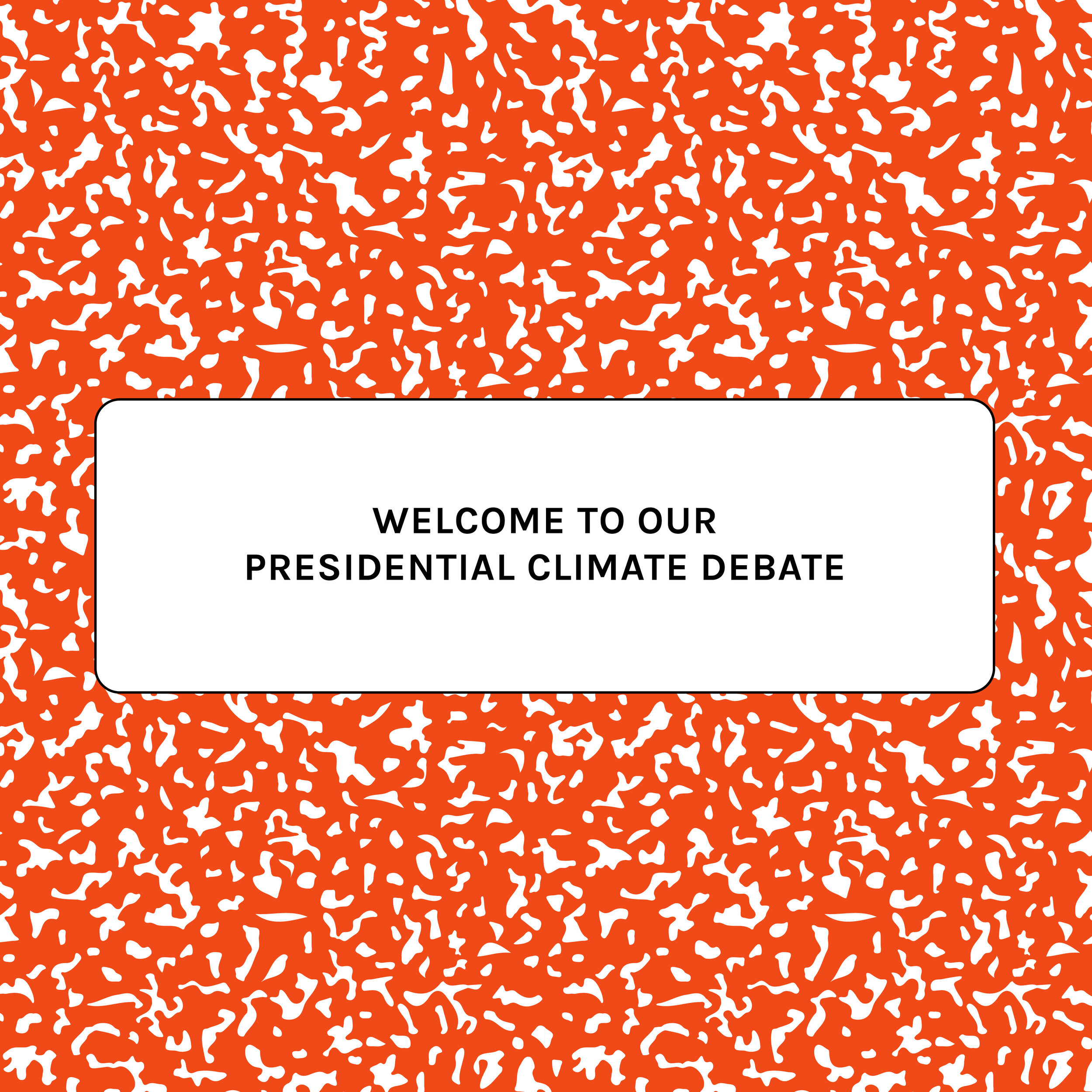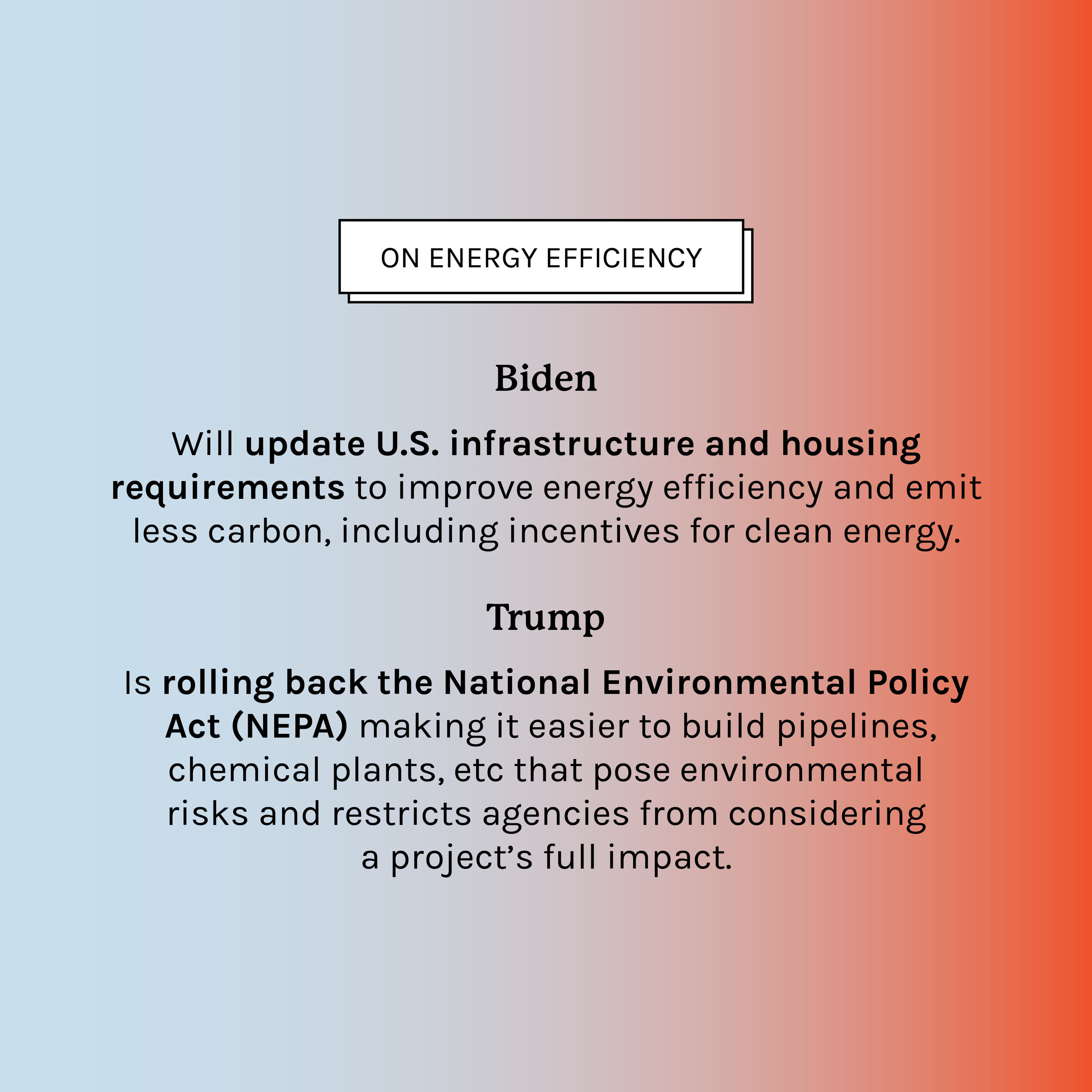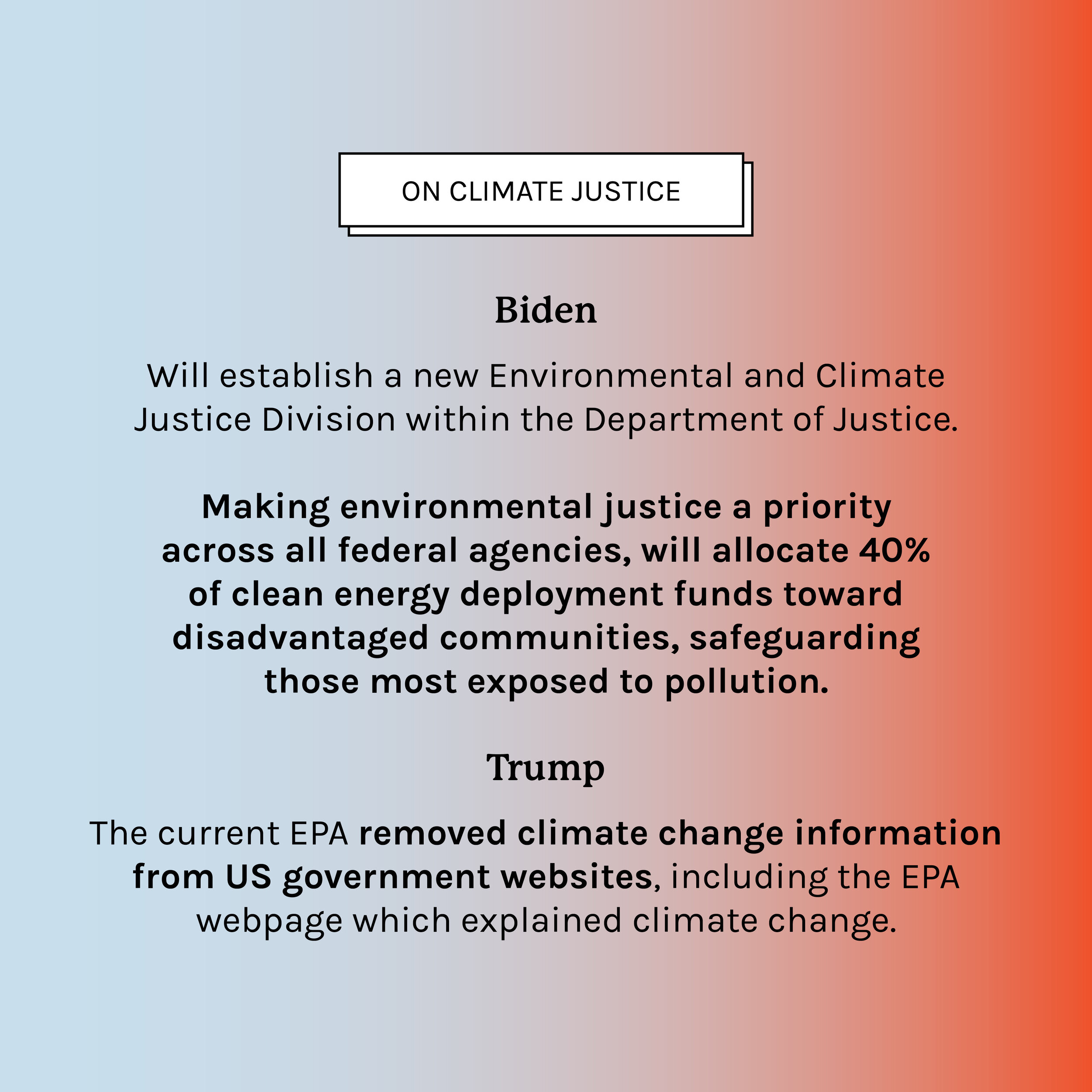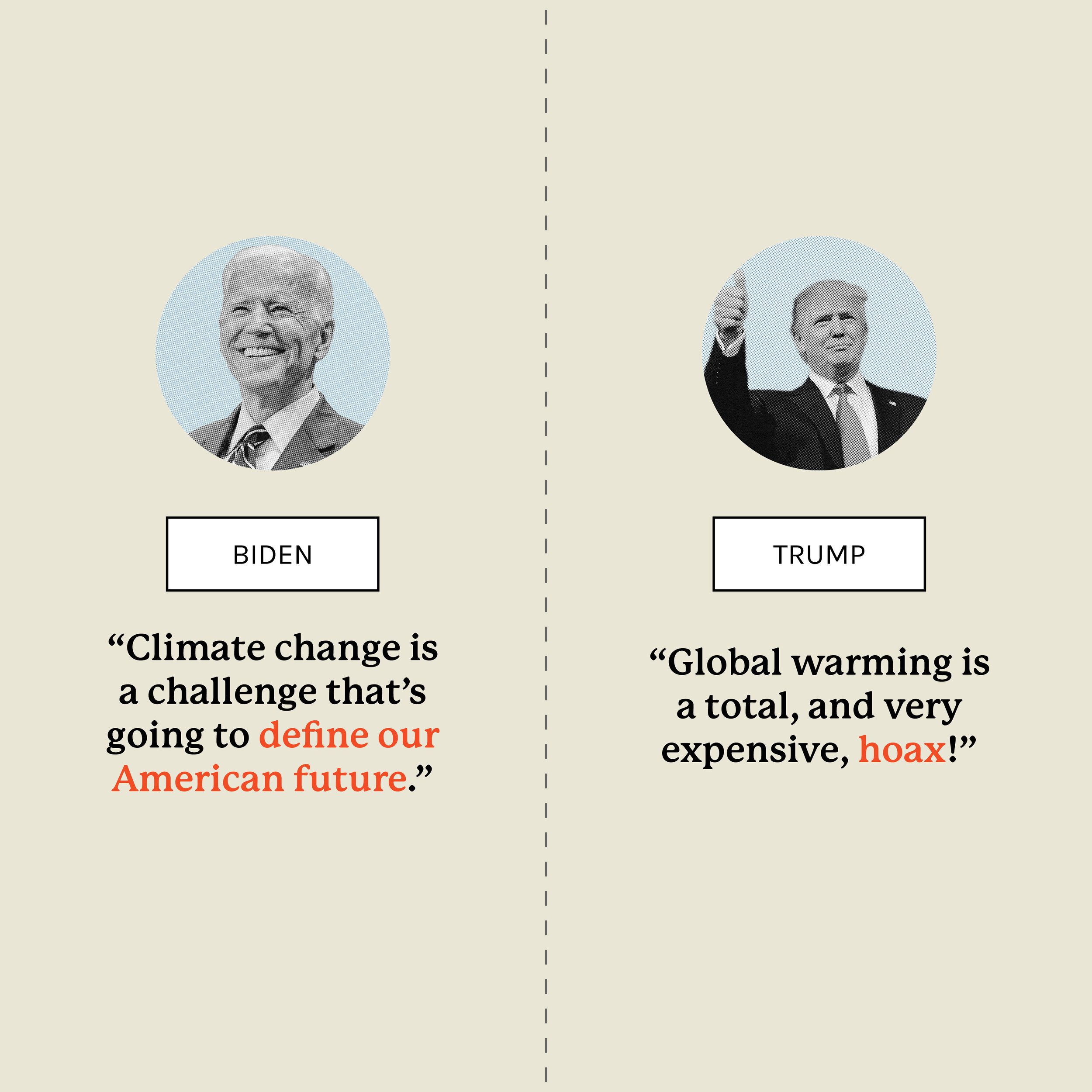Climate Vote - Electing Our Future
Electing Our Future
This November, Americans will decide on the priorities and leaders for the next 4 years (and beyond). The 2020 election is pivotal - a true “game changer” moment - and will determine our nation’s role in combating climate change. As the world’s second largest emitter of greenhouse gases, the United States has a leadership role to play for the rest of the world. We will not be able to prevent the worst effects of climate change unless all countries with large emissions are on board. Thousands of offices on the ballot this November - and every one of them is a chance to vote for candidates that support clean energy policies.
Where do the Presidential Candidates Stand on Climate Change?
Joe Biden and Kamala Harris (D)
Climate change is one of the tenets of the Biden-Harris platform. They consistently highlight their ideas for reducing carbon emissions and rebuilding the economy with clean energy jobs. Some of the major aspects of their plan include:
Committing $2 trillion over the next 4 years to ensure the U.S. achieves a 100% clean energy economy and reaches net-zero emissions no later than 2050
Rejoining the Paris Climate Accord and becoming a global leader in rallying the rest of the world to meet the threat of climate change.
Conserving 30% of America’s lands and waters by 2030.
Updating U.S. infrastructure to require new homes to be energy efficient.
Establishing a new Environmental and Climate Justice Division within the Department of Justice.
Developing new fuel economy standards aimed at ensuring 100% of new car sales will be electrified.
Donald Trump and Mike Pence (R)
Since President Trump has been in office, he has reversed 100 Environmental Rules. His administration has committed to making the economy grow at the cost of environmental protection, painting the economy and environment as an “either/or” proposition. It is important that we all understand the effect these deregulations will have on our planet. A few examples of the Trump Administration’s policies from the past 4 years include:
Pulling out of the Paris Climate Agreement - which will happen on November 4th, 2020.
Rolling back the National Environmental Policy Act (NEPA). NEPA requires federal agencies to assess the environmental effects of their proposed actions prior to making decisions and allows for public comment. This rollback will make it easier to build highways, pipelines, chemical plants, and other projects that pose environmental risks and restricts the ability of agencies to consider a project’s full impact.
Approving the Keystone XL and Dakota Access pipelines and reversing the moratorium on new leases for oil and gas development on federal lands.
Signing legislation to open the Arctic National Wildlife Refuge to oil and gas drilling.
Changing the way the Endangered Species Act is applied, making it more difficult to protect wildlife from long-term threats posed by climate change.
Are there other elected officials that can positively impact climate policies?
Control of the Senate is up-for-grabs - Democrats need to flip 5 seats to take the majority
The entire House of Representatives (which has introduced the Green New Deal and passed hundreds of bills that seek to roll back climate change) is up for re-election
11 Governors (Delaware, Indiana, Missouri, Montana, New Hampshire, North Carolina, North Dakota, Utah, Vermont, Washington, West Virginia) are on the ballot for both re-election and open seats
Most state legislatures are up for reelection - More than 90% of the laws you live by are passed by the state legislature. Climate Candidates are on the ballot for hundreds of offices.
What Does a “Green” Candidate Look Like?
Someone who wants to:
Set local and statewide emissions goals
Encourage the production and accessibility of electric vehicles
Make it easier to live without cars and support public transportation
Incentivize cleaner farming and agricultural processes to maximize production while reducing carbon emissions
Adopt a “pollution tax” (sometimes called a “carbon tax”), imposing a penalty on businesses and industries that produce carbon emissions
Expand renewable energy options in all communities, including making wind, solar, and hydro power more available and affordable
How Can I Find Out If There are Green Candidates on My Ballot?
Check out where your candidates for U.S. Senate and House stand in terms of their ‘climate calculation’ which rates their positions and voting record on the issue
There are several environmental-focused organizations that endorse and support candidates. You can see their lists here:
How Can I Support Green Candidates?
VOTE (early, by mail, or on November 3, Election Day)
Make a financial contribution to a candidate whose policies you agree with
Volunteer to make calls or send letters on behalf of a candidate you support
Encourage your friends and family to seek out Green Candidates and vote them into office
Donate to a local, statewide or national organization that pursues proactive climate policies and hold elected officials accountable
2020 has been one huge wake-up call. It’s time to act and VOTING in local and national elections is imperative.
In the words of the late John Lewis,
“Your vote is precious, almost sacred. It is the most powerful nonviolent tool we have to create a more perfect union. We all have a right to know what is in the air we breathe, in the water we drink, and the food we eat. It is our responsibility to leave this planet cleaner and greener. That must be our legacy.”
Some states are allowing early in-person voting. Otherwise you can vote in person on Election Day : November 3rd. Be sure to know your rights before heading to the polls.
COPY BY: EMMA DAVIDSON TRIBBS, PRESENTED BY: BEST X GERMANTOWN LAUNDROMAT X LONG TRAIL SUSTAINABILITY









